Even the shadiest corners of your garden can burst with vibrant life and color with the right plants. Shade-loving perennials offer a diverse range of textures, shapes, and blooms, ensuring your garden remains a captivating haven throughout the seasons.

Whether you crave lush foliage, delicate flowers, or a combination of both, this list of 33 shade-tolerant perennials has something for everyone.
Why Choose Shade Loving Perennials?
Shade-loving perennials have several advantages that make them an attractive choice for gardeners. Unlike annuals that need replanting every year, perennials come back year after year, providing long-lasting beauty and reducing the need for frequent replanting.
Benefits of Shade Loving Perennials
- Low Maintenance: Once established, shade-loving perennials require minimal care and attention.
- Year-Round Interest: Many shade-loving perennials offer colorful foliage and blooms throughout the growing season, adding interest to shady areas.
- Versatility: From ground covers to tall flowering plants, there’s a shade-loving perennial for every garden style and preference.
Factors to Consider Before Planting Shade Loving Perennials
Before selecting and planting shade-loving perennials, it’s essential to assess your garden’s specific conditions.
Light Conditions
Different shade-loving perennials have varying light requirements, ranging from partial shade to full shade. Determine the amount of sunlight your garden receives throughout the day to choose plants that will thrive in those conditions.
Soil Type and Moisture
Shade-loving perennials prefer moist, well-draining soil. Evaluate your soil type and amend it if necessary to create an optimal growing environment for your plants.
Climate Compatibility
Consider your climate zone when selecting shade-loving perennials. Some plants may be more suited to specific climates or regions, so choose varieties that are well-adapted to your area’s growing conditions.
1. Hosta
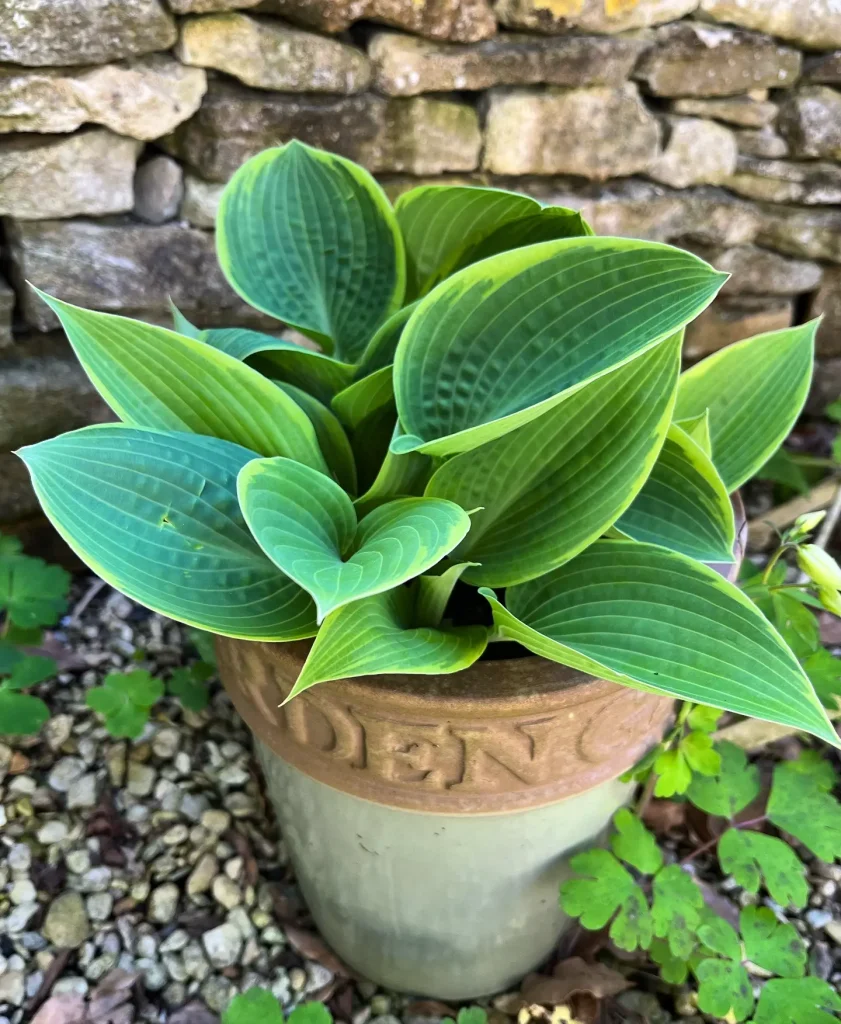
Hostas are quintessential shade lovers, renowned for their lush foliage that comes in various shades of green, blue, and even variegated patterns. These hardy perennials are easy to grow and maintain, making them a favorite among gardeners.
- Varieties to try: ‘Blue Angel’, ‘Sum and Substance’, ‘Patriot’
- Size: Varies greatly depending on variety, from miniature to large
- Zone: 3-9
- Growing conditions: Moist, well-drained soil
- Sun exposure: Shade to partial shade
- Care requirements: Low maintenance, drought tolerant once established
2. Hellebore Onyx Odyssey
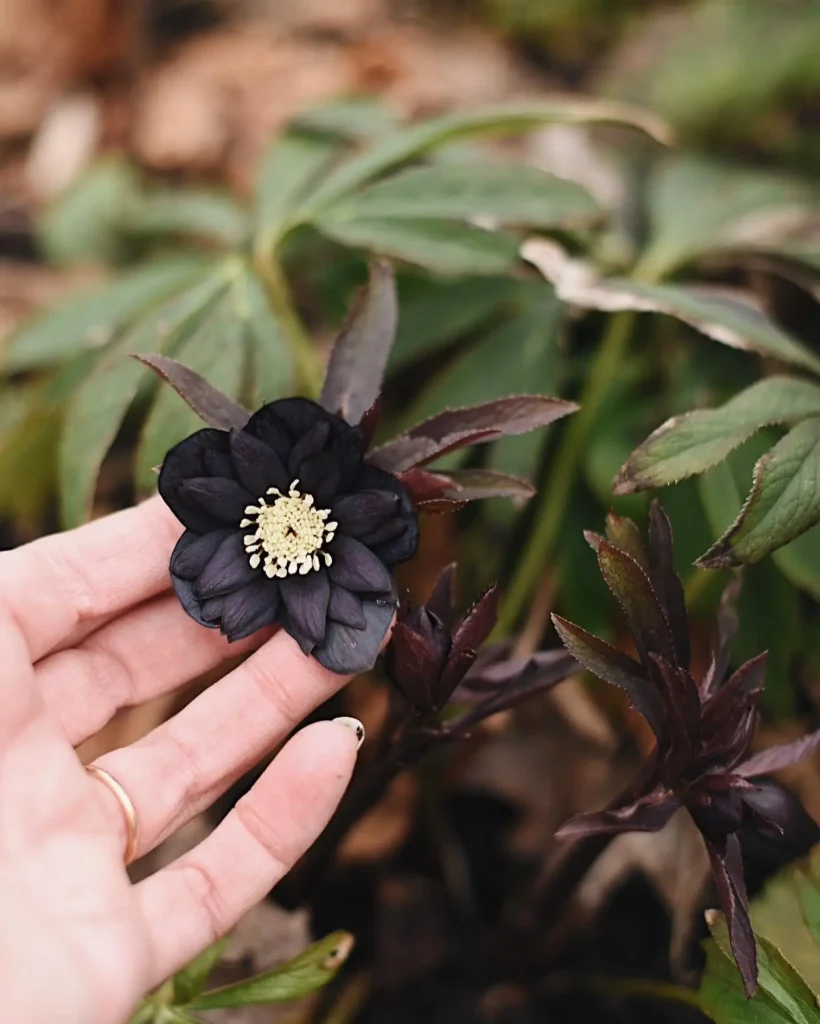
The Hellebore Onyx Odyssey stands out with its deep, nearly black flowers that bloom early in the season. This variety is a stunning addition to the shade garden, offering a unique color palette that contrasts beautifully with its green surroundings.
- Size: 12-18 inches tall and wide
- Zone: 4-9
- Growing conditions: Well-drained soil, rich in organic matter
- Sun exposure: Partial to full shade
- Care requirements: Low maintenance, drought tolerant once established
3. Woodland Phlox

Woodland Phlox spreads a carpet of sweetly scented flowers in early spring. Its vibrant blue, pink, or white blooms attract pollinators and add a delicate splash of color to the shade garden.
- Varieties to try: ‘Blue Moon’, ‘Chattahoochee’, ‘Sherwood Purple’
- Size: 12-18 inches tall and wide
- Zone: 4-8
- Growing conditions: Moist, well-drained soil
- Sun exposure: Partial to full shade
- Care requirements: Deadhead spent flowers to encourage reblooming
4. Autumn Fern

The Autumn Fern brings a touch of evergreen elegance to shady spots. Its fronds change color from coppery-red in spring to deep green in summer, providing year-round interest.
- Varieties to try: ‘Brilliance’, ‘Ghost’, ‘Lady in Red’
- Size: 1-3 feet tall and wide
- Zone: 5-9
- Growing conditions: Moist, well-drained soil, rich in organic matter
- Sun exposure: Partial to full shade
- Care requirements: Protect from harsh winter winds
5. Barrenwort
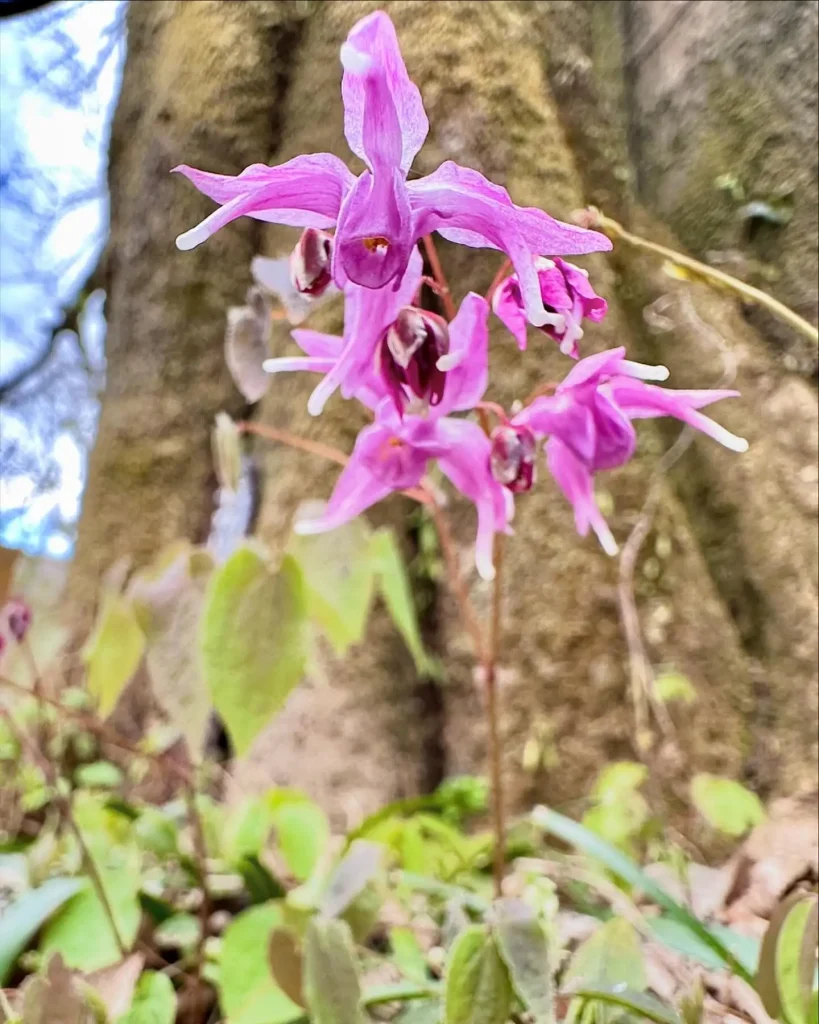
Barrenwort, or Epimedium, is a tough plant ideal for dry shade. Its heart-shaped leaves and dainty flowers in shades of yellow, pink, and white make it a charming addition to the garden.
- Varieties to try: ‘Epimedium x versicolor ‘Sulphureum’, ‘Epimedium grandiflorum ‘Lilafee’
- Size: 12-18 inches tall and wide
- Zone: 4-9
- Growing conditions: Well-drained soil, rich in organic matter
- Sun exposure: Partial to full shade
- Care requirements: Low maintenance, drought tolerant once established
6. Virginia Bluebells
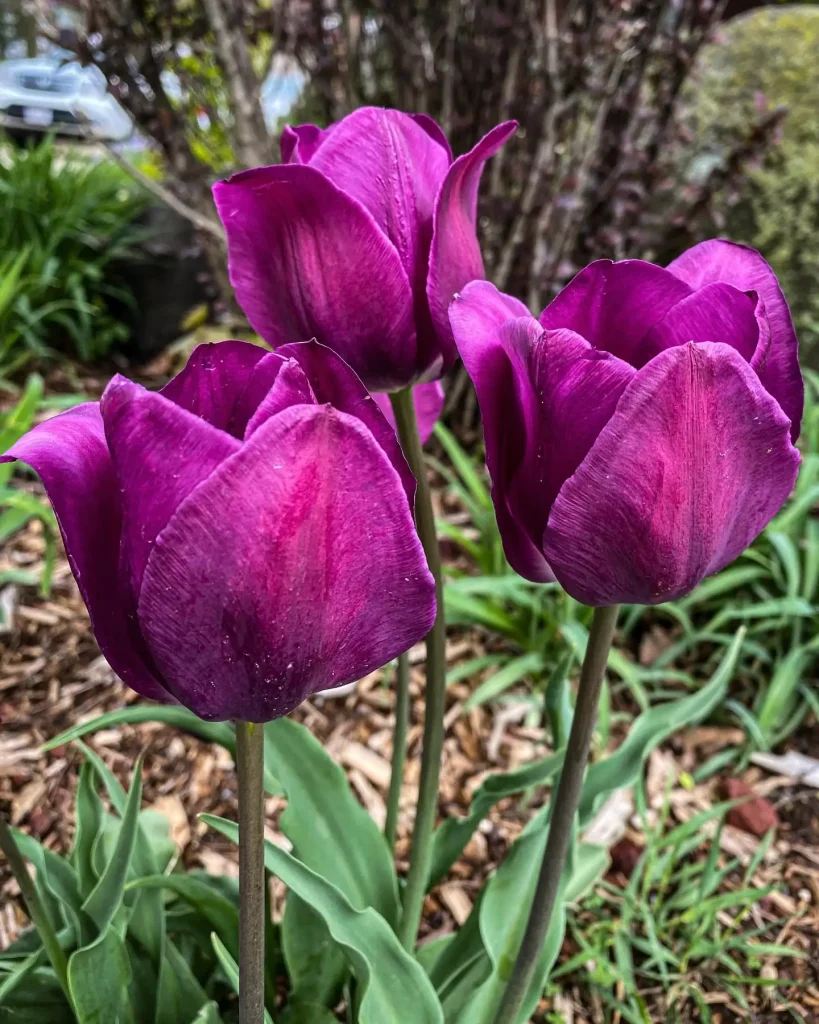
A true spring ephemeral, Virginia Bluebells carpet the garden in soft blue in early spring. Their bell-shaped flowers and lush foliage disappear by midsummer, making room for other plants.
- Size: 1-2 feet tall and wide
- Zone: 3-8
- Growing conditions: Moist, well-drained soil
- Sun exposure: Partial to full shade
- Care requirements: Foliage dies back after blooming, plant with later-emerging perennials
7. Japanese Painted Fern

This fern is a work of art, with silver, green, and burgundy fronds. The Japanese Painted Fern is perfect for adding a touch of color and texture to the shade garden.
- Varieties to try: ‘Pictum’, ‘Burgundy Lace’, ‘Godzilla’
- Size: 1-2 feet tall and wide
- Zone: 5-9
- Growing conditions: Moist, well-drained soil, rich in organic matter
- Sun exposure: Partial to full shade
- Care requirements: Protect from harsh winter winds
8. Columbine
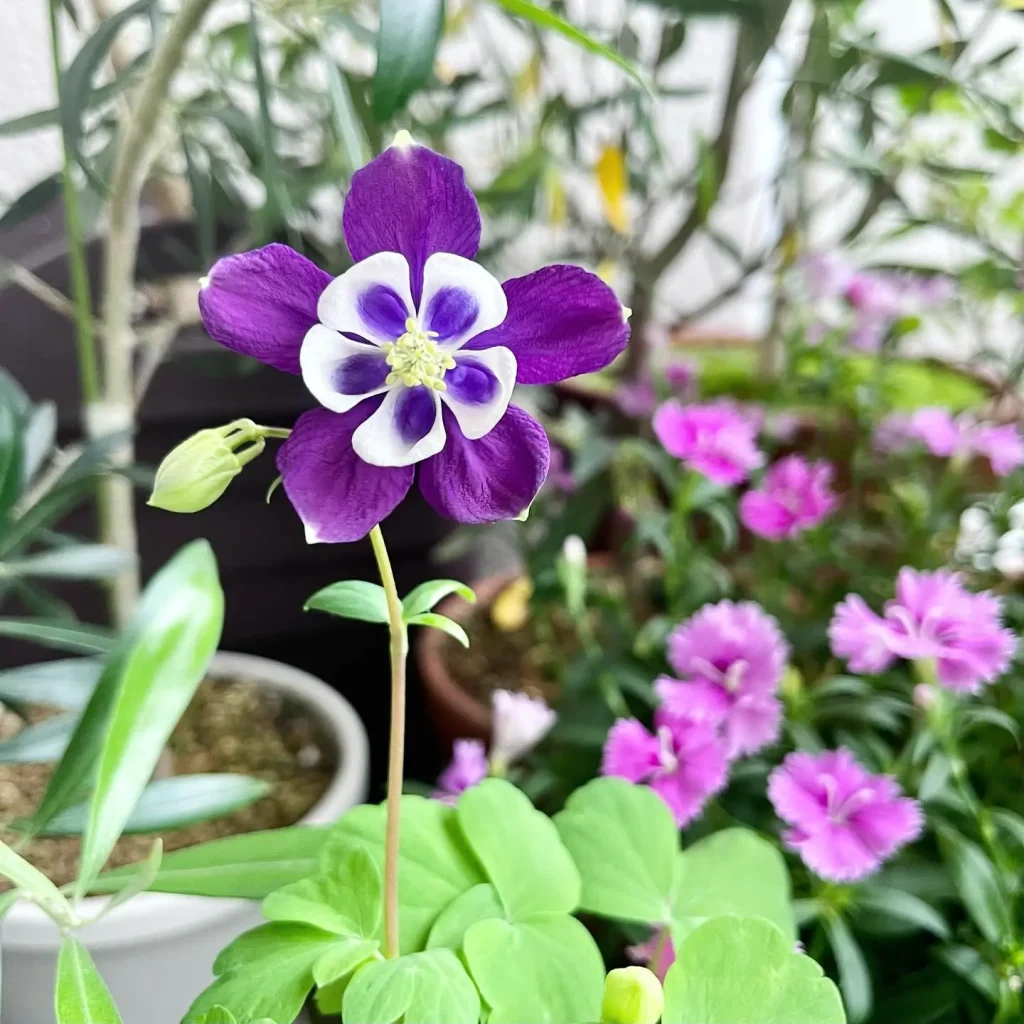
Columbine thrives in partial shade, producing intricate flowers in a wide range of colors. Its unique, nectar-rich blooms are a magnet for hummingbirds.
- Varieties to try: ‘Aquilegia canadensis’, ‘Aquilegia vulgaris’, ‘Aquilegia chrysantha’
- Size: 1-3 feet tall and wide
- Zone: 3-9
- Growing conditions: Well-drained soil
- Sun exposure: Partial shade
- Care requirements: Deadhead spent flowers to encourage reblooming
9. Phacelia
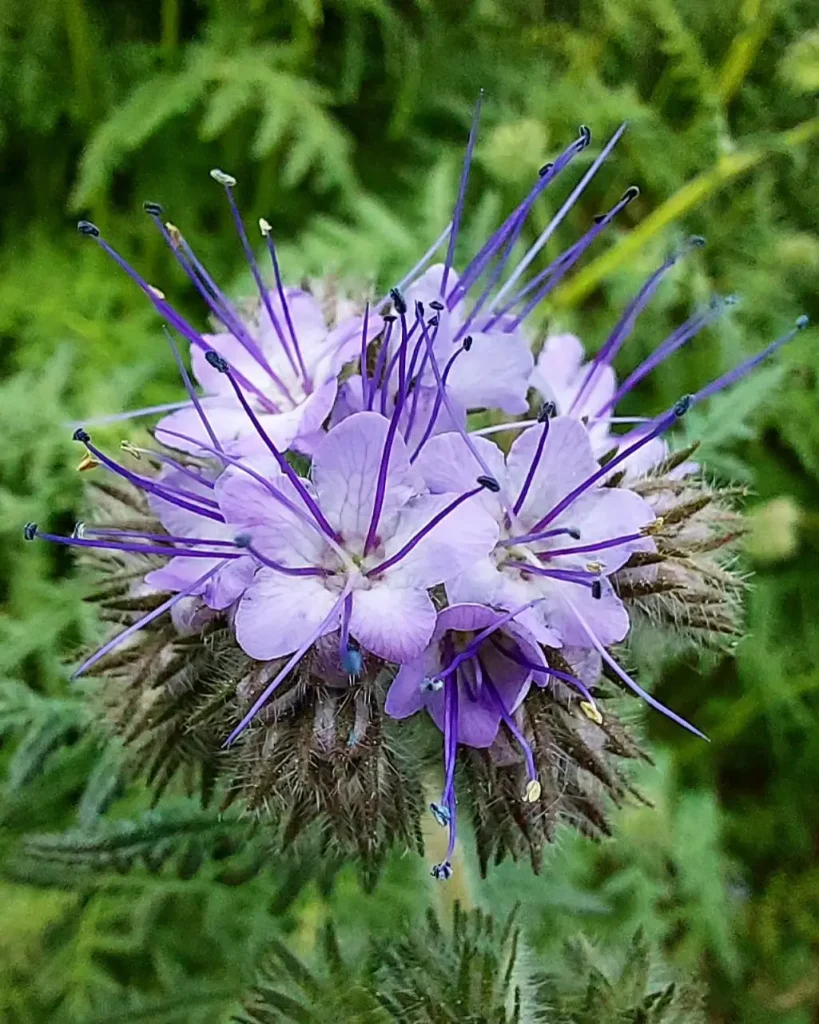
Phacelia, often used as a cover crop, also makes a lovely ornamental with its clusters of lavender-blue flowers. It prefers partial shade and well-drained soil.
- Varieties to try: ‘Phacelia campanularia’, ‘Phacelia tanacetifolia’
- Size: 1-2 feet tall and wide
- Zone: Annual
- Growing conditions: Well-drained soil
- Sun exposure: Partial shade
- Care requirements: Reseeds readily
10. Northern Maidenhair Fern

The delicate, fan-shaped fronds of the Northern Maidenhair Fern add an air of grace to the garden. This fern prefers moist, shady conditions and is perfect for a woodland setting.
- Size: 1-2 feet tall and wide
- Zone: 3-8
- Growing conditions: Moist, well-drained soil, rich in organic matter
- Sun exposure: Shade
- Care requirements: Protect from harsh winter winds
11. Green-and-gold
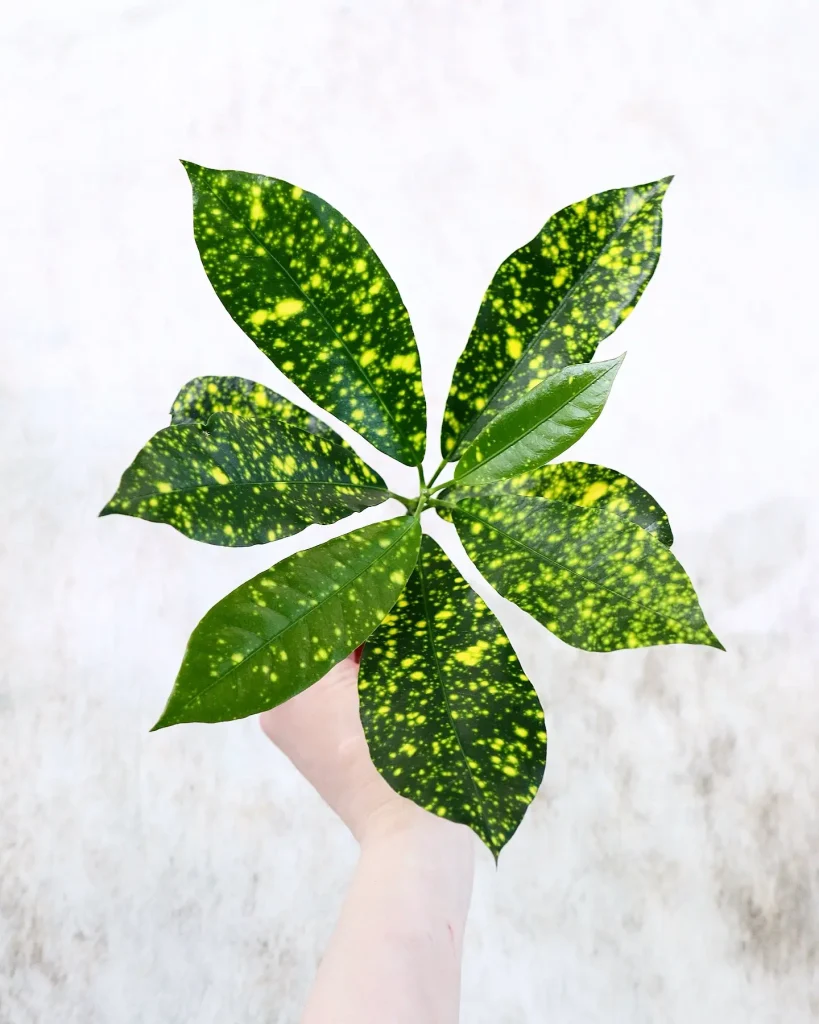
Green-and-gold is a low-growing native perennial that produces cheerful yellow flowers. It’s an excellent ground cover for shady areas, blooming profusely in spring and sporadically throughout the summer.
- Varieties to try: ‘Chrysogonum virginianum var. virginianum’
- Size: 1-2 feet tall and wide
- Zone: 5-9
- Growing conditions: Moist, well-drained soil
- Sun exposure: Partial to full shade
- Care requirements: Low maintenance
12. Foamflower
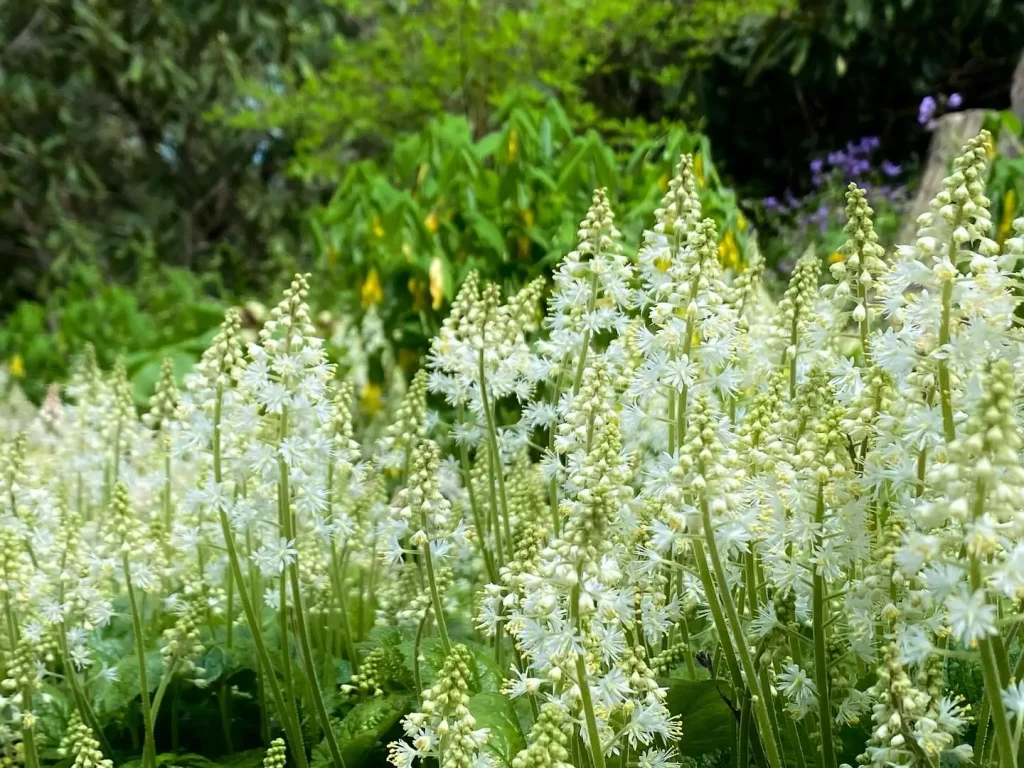
Foamflower, or Tiarella, sports attractive foliage and spikes of creamy white flowers in spring. It’s a great ground cover that spreads slowly, forming a dense carpet in the shade garden.
- Varieties to try: ‘Tiarella cordifolia’, ‘Tiarella wherryi’
- Size: 1-2 feet tall and wide
- Zone: 4-8
- Growing conditions: Moist, well-drained soil, rich in organic matter
- Sun exposure: Partial to full shade
- Care requirements: Low maintenance
13. Lungwort
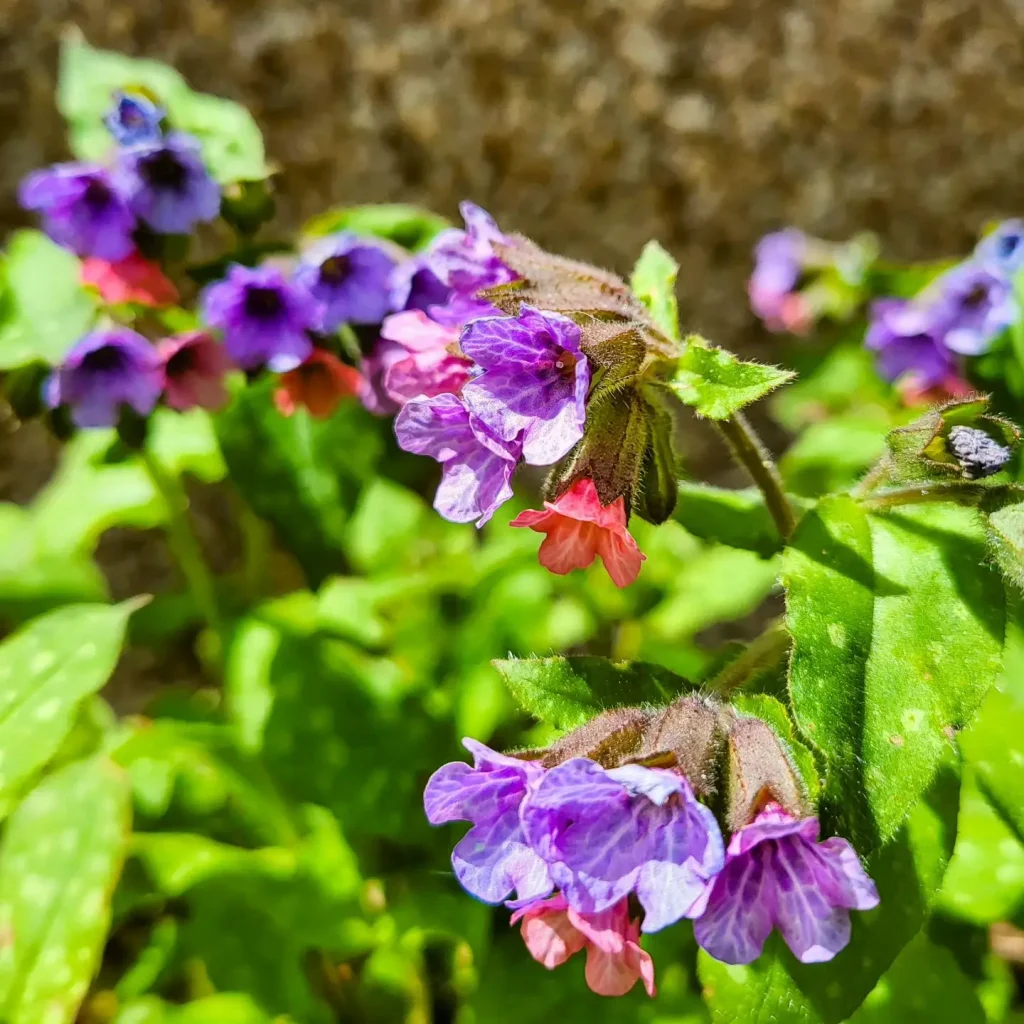
Lungwort is prized for its speckled foliage and clusters of blue, pink, or white flowers. It’s an early spring bloomer that adds a pop of color to the shade garden.
- Varieties to try: ‘Pulmonaria saccharata’, ‘Pulmonaria longifolia’
- Size: 1-2 feet tall and wide
- Zone: 4-8
- Growing conditions: Moist, well-drained soil
- Sun exposure: Partial to full shade
- Care requirements: Low maintenance
14. Bugleweed
Bugleweed, or Ajuga, features glossy leaves and spikes of blue, violet, or white flowers. It’s an aggressive ground cover that thrives in shady areas, providing a lush, low-maintenance carpet.
- Varieties to try: ‘Ajuga reptans ‘Catlin’s Giant’, ‘Ajuga reptans ‘Burgundy Glow’
- Size: 6-12 inches tall and wide
- Zone: 3-9
- Growing conditions: Well-drained soil
- Sun exposure: Partial to full shade
- Care requirements: Can be invasive, control spread
15. Wild Ginger
Wild Ginger is known for its large, heart-shaped leaves and hidden, bell-shaped flowers. It’s an excellent ground cover for deep shade, adding texture and greenery to the garden floor.
- Varieties to try: ‘Asarum canadense’, ‘Asarum europaeum’
- Size: 6-12 inches tall and wide
- Zone: 4-8
- Growing conditions: Moist, well-drained soil, rich in organic matter
- Sun exposure: Shade
- Care requirements: Low maintenance
16. Ligularia
Ligularia boasts large, dramatic leaves and spikes of yellow or orange flowers. It prefers moist, shady conditions and is perfect for adding a bold statement to the garden.
- Varieties to try: ‘Ligularia dentata ‘Britt Marie Crawford’, ‘Ligularia stenocephala ‘The Rocket’
- Size: 2-5 feet tall and wide
- Zone: 4-8
- Growing conditions: Moist, well-drained soil
- Sun exposure: Partial to full shade
- Care requirements: Provide consistent moisture
17. Spiderwort
Spiderwort, with its grass-like leaves and clusters of blue, purple, or pink flowers, thrives in partial shade. It’s a resilient plant that adapts well to different soil types.
- Varieties to try: ‘Tradescantia x andersoniana ‘Sweet Kate’, ‘Tradescantia virginiana’
- Size: 1-3 feet tall and wide
- Zone: 4-9
- Growing conditions: Well-drained soil
- Sun exposure: Partial shade
- Care requirements: Deadhead spent flowers to encourage reblooming
18. Woodland Stonecrop
Woodland Stonecrop is a succulent that excels in dry shade. Its small, star-shaped flowers and attractive foliage make it a great choice for rock gardens or borders.
- Varieties to try: ‘Sedum ternatum’, ‘Sedum kamtschaticum’
- Size: 6-12 inches tall and wide
- Zone: 4-9
- Growing conditions: Well-drained soil
- Sun exposure: Partial shade
- Care requirements: Drought tolerant once established
19. Viola
Violas are beloved for their cheerful, pansy-like flowers that come in a rainbow of colors. They prefer cool, shady spots and can bloom from spring through fall with proper care.
- Varieties to try: ‘Viola sororia’, ‘Viola cornuta’
- Size: 6-12 inches tall and wide
- Zone: 4-8
- Growing conditions: Moist, well-drained soil
- Sun exposure: Partial shade
- Care requirements: Deadhead spent flowers to encourage reblooming
20. Asarum canadense (Canadian Wild Ginger)
Also known as Canadian Wild Ginger, Asarum canadense features large, heart-shaped leaves. It’s a North American native that thrives in woodland settings, providing excellent ground cover in shady areas.
- Size: 6-12 inches tall and wide
- Zone: 3-7
- Growing conditions: Moist, well-drained soil, rich in organic matter
- Sun exposure: Shade
- Care requirements: Low maintenance
21. Astilbe
Astilbe is known for its feathery plumes of flowers in shades of pink, red, white, and purple. It prefers moist, shady conditions and adds a soft, airy texture to the garden.
- Varieties to try: ‘Astilbe chinensis ‘Visions’, ‘Astilbe japonica ‘Deutschland’
- Size: 1-4 feet tall and wide
- Zone: 4-8
- Growing conditions: Moist, well-drained soil
- Sun exposure: Partial to full shade
- Care requirements: Provide consistent moisture
22. Epimedium
Epimedium, or Barrenwort, offers delicate flowers and attractive foliage. It’s a drought-tolerant ground cover that works well in dry, shady spots.
- Varieties to try: ‘Epimedium x versicolor ‘Sulphureum’, ‘Epimedium grandiflorum ‘Lilafee’
- Size: 12-18 inches tall and wide
- Zone: 4-9
- Growing conditions: Well-drained soil, rich in organic matter
- Sun exposure: Partial to full shade
- Care requirements: Low maintenance, drought tolerant once established
23. Ferns
Ferns are a diverse group of plants that excel in the shade. From the delicate Maidenhair Fern to the bold Ostrich Fern, they add texture and greenery to the garden.
- Size: Varies greatly depending on variety
- Zone: Varies depending on variety
- Growing conditions: Moist, well-drained soil, rich in organic matter
- Sun exposure: Shade to partial shade
- Care requirements: Varies depending on variety
24. Hellebore (Lenten Rose)
Hellebores bloom in late winter to early spring, offering flowers in shades of green, pink, purple, and white. They’re a welcome sight in the shade garden when little else is blooming.
- Varieties to try: ‘Helleborus niger’, ‘Helleborus orientalis’
- Size: 1-2 feet tall and wide
- Zone: 4-9
- Growing conditions: Well-drained soil, rich in organic matter
- Sun exposure: Partial to full shade
- Care requirements: Low maintenance, drought tolerant once established
25.Lamium (Dead Nettle)
Lamium is a fast-spreading ground cover with variegated leaves and clusters of pink, purple, or white flowers. It’s ideal for brightening up shady areas.
- Varieties to try: ‘Lamium maculatum ‘Beacon Silver’, ‘Lamium maculatum ‘White Nancy’
- Size: 6-12 inches tall and wide
- Zone: 4-8
- Growing conditions: Well-drained soil
- Sun exposure: Partial to full shade
- Care requirements: Can be invasive, control spread
26. Tiarella (Foamflower)
Tiarella, or Foamflower, is a charming plant with heart-shaped leaves and foamy spikes of flowers. It’s a great addition to the shade garden, offering both foliage and floral interest.
- Varieties to try: ‘Tiarella cordifolia’, ‘Tiarella wherryi’
- Size: 1-2 feet tall and wide
- Zone: 4-8
- Growing conditions: Moist, well-drained soil, rich in organic matter
- Sun exposure: Partial to full shade
- Care requirements: Low maintenance
27. Toad Lily
Toad Lilies are known for their exotic, speckled flowers that bloom in late summer to fall. They prefer moist, shady conditions and add a unique touch to the garden.
- Varieties to try: ‘Tricyrtis hirta’, ‘Tricyrtis formosana’
- Size: 1-3 feet tall and wide
- Zone: 4-9
- Growing conditions: Moist, well-drained soil, rich in organic matter
- Sun exposure: Partial to full shade
- Care requirements: Provide consistent moisture
28. Bletilla (Ground Orchid)
Bletilla, or Ground Orchid, produces beautiful orchid-like flowers in shades of pink and purple. It’s a surprisingly hardy plant that thrives in dappled shade.
- Varieties to try: ‘Bletilla striata’, ‘Bletilla ochracea’
- Size: 1-2 feet tall and wide
- Zone: 5-9
- Growing conditions: Well-drained soil
- Sun exposure: Partial shade
- Care requirements: Protect from harsh winter winds
29. Heuchera (Coral Bells)
Heuchera, or Coral Bells, offers a stunning array of foliage colors, from silver and burgundy to chartreuse. Its delicate flowers attract hummingbirds and butterflies.
- Varieties to try: ‘Heuchera ‘Palace Purple’, ‘Heuchera ‘Caramel’
- Size: 1-2 feet tall and wide
- Zone: 4-9
- Growing conditions: Well-drained soil
- Sun exposure: Partial shade
- Care requirements: Divide every few years to maintain vigor
30. Brunnera (Siberian Bugloss)
Brunnera is valued for its heart-shaped leaves and clouds of tiny blue flowers. It’s a fantastic plant for adding texture and color to the shade garden.
- Varieties to try: ‘Brunnera macrophylla ‘Jack Frost’, ‘Brunnera macrophylla ‘Looking Glass’
- Size: 1-2 feet tall and wide
- Zone: 3-8
- Growing conditions: Moist, well-drained soil
- Sun exposure: Partial to full shade
- Care requirements: Low maintenance
31. Corydalis
Corydalis produces delicate, fern-like foliage and tubular flowers in shades of blue, yellow, and pink. It prefers moist, shady spots and can bloom from spring through fall.
- Varieties to try: ‘Corydalis lutea’, ‘Corydalis solida’
- Size: 6-12 inches tall and wide
- Zone: 5-8
- Growing conditions: Well-drained soil
- Sun exposure: Partial shade
- Care requirements: Foliage dies back after blooming, plant with later-emerging perennials
32. Bleeding Heart (Dicentra)
Bleeding Heart is a classic shade garden plant, known for its arching stems of heart-shaped flowers. It’s a spring bloomer that adds romance and beauty to the garden.
- Varieties to try: ‘Dicentra spectabilis’, ‘Dicentra eximia’
- Size: 1-3 feet tall and wide
- Zone: 3-9
- Growing conditions: Moist, well-drained soil
- Sun exposure: Partial to full shade
- Care requirements: Foliage dies back after blooming, plant with later-emerging perennials
33. Foxglove
Foxglove towers above the garden with its spikes of tubular flowers in pink, purple, white, and yellow. It prefers partial shade and well-drained soil, adding height and drama to the garden.
Incorporating these shade-loving perennials into your garden will ensure a lush, vibrant space that thrives despite the lack of sunlight.
- Varieties to try: ‘Digitalis purpurea’, ‘Digitalis grandiflora’
- Size: 2-5 feet tall and wide
- Zone: 4-8
- Growing conditions: Well-drained soil
- Sun exposure: Partial shade
- Care requirements: Self-seeds readily, can be invasive
How to Care for Shade Loving Perennials
While shade-loving perennials are relatively low maintenance, they still require proper care to thrive.
Watering and Moisture Requirements
Keep the soil consistently moist but not waterlogged, especially during hot, dry periods. Mulching can help retain moisture and suppress weeds around the base of the plants.
Fertilization
Apply a balanced, slow-release fertilizer in spring to promote healthy growth and vibrant blooms. Avoid over-fertilizing, as this can lead to lush foliage but fewer flowers.
Mulching
Mulch around the base of shade-loving perennials to help retain soil moisture, regulate soil temperature, and suppress weed growth. Organic mulches like shredded bark or compost are ideal for shaded areas.
Pest and Disease Control
Monitor shade-loving perennials for common pests like slugs and snails, especially in moist, shady conditions. Use organic pest control methods or barrier treatments to protect your plants from damage.
Design Tips for Incorporating Shade Loving Perennials
Incorporating shade-loving perennials into your garden design can add visual interest and texture to shady areas.
Color Schemes and Textures
Consider the color and texture of foliage when selecting shade-loving perennials. Mix and match plants with different leaf shapes, sizes, and colors to create dynamic planting combinations.
Companion Planting
Pair shade-loving perennials with other plants that thrive in similar growing conditions, such as ferns, hostas, and heucheras. This creates a cohesive planting scheme and maximizes the beauty of your shady garden.
Conclusion
Shade-loving perennials are a valuable addition to any garden, offering beauty, versatility, and low maintenance. By choosing the right plants and providing proper care, you can create a lush and vibrant shady oasis that will delight you for years to come.